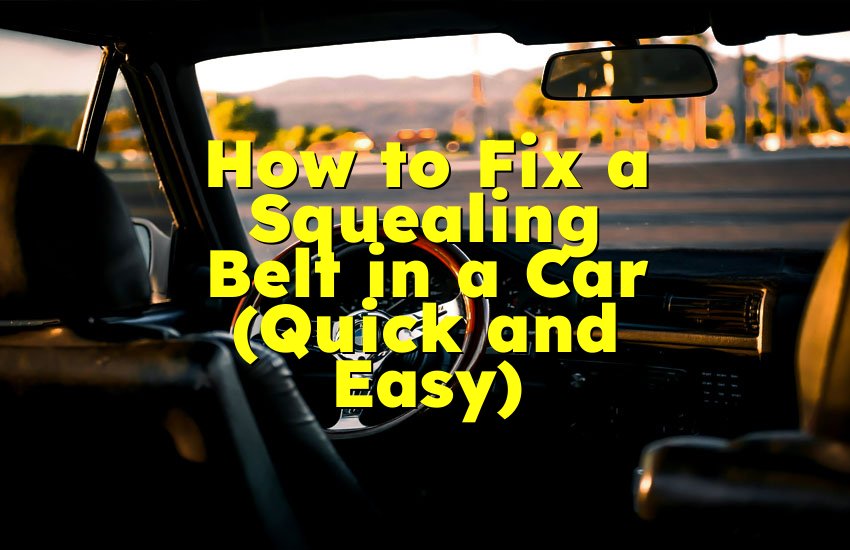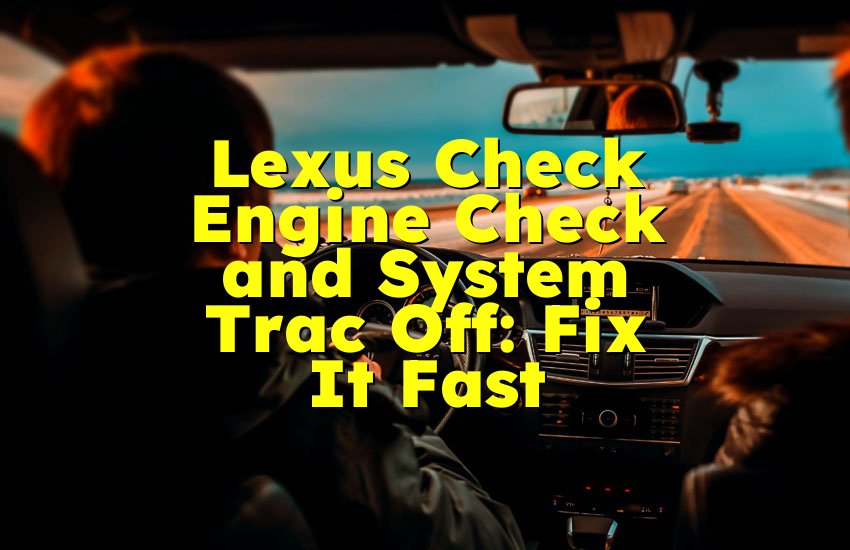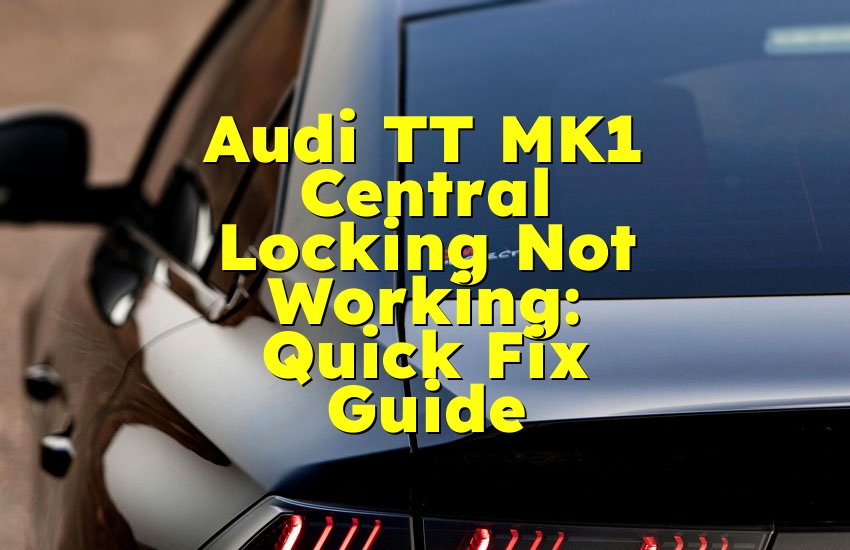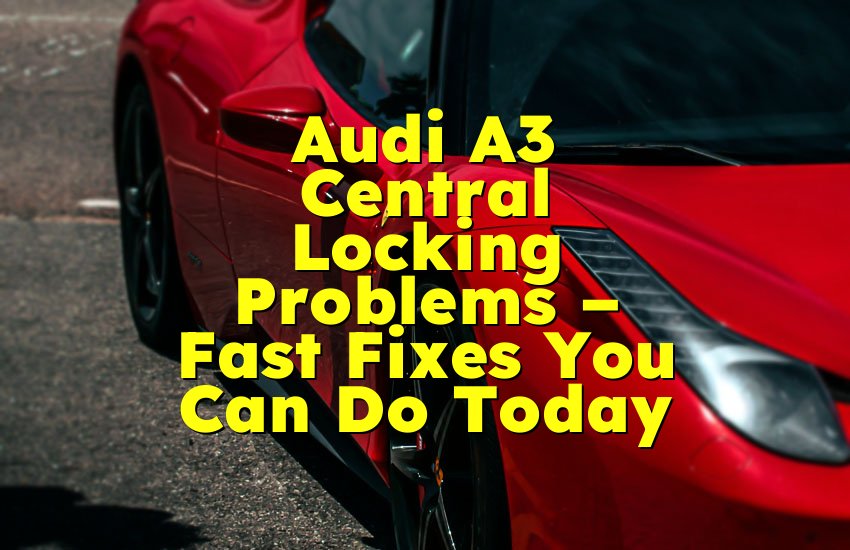As an Amazon Associate, I earn from qualifying purchases at no extra cost to you.
How Long Can You Drive With a Bad Water Pump Before Damage?
You might be wondering how long you can really drive with a bad water pump. The honest answer? Not very far. If your water pump is failing, your car can overheat within just 5 to 20 minutes of driving. I know that sounds scary, but it’s true. I've seen people try to push their car too far and ended up with a dead engine. In this article, I will explain everything in a very simple and clear way so you can understand how long you can drive with a bad water pump and what signs to look for before things go wrong.
What Happens When the Water Pump Starts Going Bad
When your car’s water pump starts going bad, many small things begin to fail quietly. You might not see anything wrong at first. But slowly, your engine will start heating up more than normal. This is because the water pump’s job is to move coolant through the engine and keep it cool. When it stops working well, that cooling stops too.
The water pump is a very important part of the engine. It moves coolant from the radiator into the engine. That coolant keeps the engine from getting too hot. If the pump isn't working right, your engine can overheat quickly. Even a short trip can turn into a big problem if your engine starts to overheat.
Some signs that your water pump might be going bad include a loud whining sound coming from the engine area, leaks under the front of your car, steam coming from the hood, or your temperature gauge going higher than normal. Some people ignore these signs and keep driving. That's a big mistake. A few extra minutes on the road with a bad water pump can cause huge damage to your engine. You could end up needing a full engine replacement, which costs a lot.
If you're lucky, you might be able to drive for a few miles with a bad water pump, but it's never safe. It all depends on how bad the problem is. If the pump is just starting to fail, you might have a little more time. But if it has already stopped working completely, your car will overheat fast. Usually, you have 5 to 20 minutes before the engine gets too hot.
Even if you drive just 10 minutes with an overheating engine, it can warp the engine head or blow the head gasket. That kind of damage is very expensive to fix. So, when you notice signs of a failing water pump, the best thing you can do is stop driving and get your car checked.
- A bad water pump causes engine overheating
- Overheating can start in 5 to 20 minutes
- Signs include leaks, noise, steam, and high temperature
- Driving with a bad pump can ruin your engine
- Stop the car and get help as soon as you notice any issue
Why a Water Pump Is So Important for Your Car
The water pump in your car is not just a small part that you can ignore. It plays a big role in keeping your engine working properly. It keeps the engine cool by pushing coolant through the engine block and radiator. Without it, the engine gets very hot, very fast. And that heat can destroy the engine.
The pump is usually driven by a belt. When the engine is running, the belt turns the pump. As it turns, it pushes coolant around in a loop — from the radiator to the engine and back to the radiator again. This helps control the engine temperature and keeps everything running smooth.
When the pump fails, coolant doesn’t move like it should. That means heat builds up inside the engine. If the heat gets too high, the metal in the engine can start to change shape. The engine block, pistons, and other parts can get damaged. This can happen quickly. In just a few minutes, your engine can go from hot to destroyed.
Also, if the water pump is leaking, you might lose coolant. And if there's not enough coolant in the system, that makes things worse. The engine will heat up even faster. It's like trying to cool down with no fan or no air conditioning on a hot summer day. It just doesn't work.
Another problem is pressure. As the engine gets hotter, the pressure builds up. This can cause hoses to break or burst. Steam can come out from under the hood, and you might even smell something sweet — that's the smell of leaking coolant. Once this starts happening, you should not drive the car any longer.
Fixing a water pump isn't cheap, but it's way cheaper than fixing a blown engine. That's why it's so important to take it seriously.
- Water pump moves coolant to cool the engine
- A failed pump can cause engine heat and damage
- Losing coolant makes overheating happen faster
- Overheated engine parts can warp or crack
- Fixing the pump early saves money and trouble
Signs That Show Your Water Pump Is Failing
It's not always easy to know when your water pump is failing. But your car gives you hints. You just have to pay attention. These signs often show up before the real damage begins. If you catch them early, you can fix the problem before your engine gets hurt.
One of the first signs is noise. You might hear a whining or grinding sound from the front of your car. This happens when the water pump bearings wear out. As they get worse, the noise gets louder. Some people think it’s just the engine being loud, but it's not. It's a warning.
Another sign is leaking coolant. If you notice green, orange, or pink fluid under your car, it could be coolant. The leak often comes from the water pump. Sometimes it's just a few drops, but that's still a sign that something is wrong. Over time, that small leak gets worse.
You might also notice steam from the hood. If the engine gets too hot, the coolant starts to boil and turn into steam. That steam rises and escapes through the hood. It's a very clear sign that your car is overheating. You need to stop driving right away when you see this.
Look at the temperature gauge on your dashboard. If the needle starts going higher than the middle, it means the engine is getting hot. If it goes all the way to the red zone, stop the car right away. Driving with the gauge in the red zone is very risky.
Sometimes, you might even see the check engine light come on. This can happen when the car senses a problem with the temperature or coolant system.
- Whining or grinding sound from the engine
- Coolant leaking under the car
- Steam coming from the hood
- Temperature gauge rising too high
- Check engine light turns on
How Long Is It Safe to Drive With a Bad Water Pump
Driving with a bad water pump is never safe, but people still want to know how long they can risk it. The truth is, you might only have 5 to 20 minutes before your engine overheats and starts getting damaged. Sometimes, even less than that if your coolant is low or the weather is hot.
If your water pump is just starting to fail, and it’s only making noise but not leaking yet, you might be able to drive a short distance to a mechanic. But it’s still a big risk. If the pump stops working completely while you’re driving, your car will overheat fast.
The heat inside the engine builds up very quickly. When that happens, metal parts start to expand. This can cause cracks or warping in the engine. Even one time of driving for 10 or 15 minutes with no coolant movement can ruin the engine.
Some drivers think they can just stop and cool the car every few minutes. That might work for a little while, but it's not a good solution. The more you drive with a bad pump, the higher the chance of engine failure.
If you’re stuck and have no choice but to drive, keep your eyes on the temperature gauge. If it starts rising fast, pull over and turn off the car. Let it cool completely before trying to move again.
But the best thing to do is call for a tow or get mobile mechanic help. That's safer for your car and your wallet.
- Driving time with bad pump is 5 to 20 minutes
- Engine damage starts quickly after overheating
- Don't drive if coolant is leaking
- Stopping often does not fully prevent damage
- Getting a tow is the safest option
What to Do If You Think Your Water Pump Is Bad
If you notice the signs of a bad water pump, don't ignore them. The first thing to do is stop the car and let it cool down. Open the hood carefully after waiting 15 to 20 minutes. Check for leaks, steam, or strange sounds.
Next, check your coolant level. If it’s low, you can add more coolant, but only after the engine is cool. Never open the radiator cap when the engine is hot — it can spray hot liquid and hurt you. If coolant is leaking fast, adding more won't help for long.
Don't try to drive long distances. If you're close to a shop, you might take a chance. But anything more than a few miles is too risky. Instead, call a tow truck or ask for help. It might cost a little now, but it will save you thousands later.
You should tell the mechanic about the signs you saw. That helps them find the problem faster. They might check the pump, belts, hoses, and coolant level.
Replacing a water pump usually takes a few hours. The price depends on the car, but it's much cheaper than fixing a ruined engine. Also, once you fix the pump, your car will run better and cooler again.
- Stop the car if it shows signs of overheating
- Let engine cool before checking anything
- Add coolant only when engine is cool
- Don't drive more than a few miles
- Get help from a mechanic quickly
How to Prevent Water Pump Failure in the Future
You can avoid water pump problems by taking care of your car and doing regular checks. One of the best ways to prevent failure is to check your coolant level often. If it’s low, find out why. Don't just keep refilling it without fixing the leak.
Make sure to flush your coolant system every 2 to 3 years. Old coolant can damage the water pump over time. It gets dirty, and that dirt causes wear inside the pump.
Listen for sounds coming from the engine. If something sounds different or strange, get it checked. Many times, the first sign of pump failure is a small noise. Catching it early can save your engine.
Also, watch for warning signs like steam, leaks, or high temperature. If you catch these signs early, fixing the pump is much easier and cheaper.
Some mechanics suggest changing the water pump when you replace the timing belt. This is smart because both parts are often close together. Changing them at the same time saves on labor costs and prevents surprise failures.
Lastly, use good quality coolant and follow your car's service schedule. These simple steps can help you avoid a big problem in the future.
- Check coolant level often
- Flush coolant system every 2 to 3 years
- Listen for engine noises
- Fix small issues early
- Replace pump with timing belt if possible
- Use quality coolant and follow service schedule
Final Thoughts
A bad water pump is a small part that can cause big problems. You only have 5 to 20 minutes before engine damage starts, and sometimes even less. Driving with a bad pump is never safe. It's better to stop, check, and get help right away. Paying attention to signs like leaks, noise, and heat can save your engine and your money. Stay alert, take care of your car, and your engine will stay healthy for a long time.
Frequently Asked Questions (FAQs)
Is it safe to drive my car with a bad water pump?
No, it is not safe to drive with a bad water pump. The water pump helps keep your engine cool. If it is not working, the engine can get hot very fast. In just 5 to 20 minutes, the engine can overheat and suffer damage. Even if the pump is only slightly bad, it can still lead to overheating. The best thing to do is to stop driving and get the car checked right away. Driving with a bad pump can lead to expensive repairs or a full engine replacement.
Can a car overheat instantly with a bad water pump?
Yes, a car can overheat very quickly with a bad water pump. When the water pump stops working, the coolant stops moving. This means the heat from the engine has no way to escape. The engine can go from normal to overheating in just minutes. If the weather is hot or if you're in traffic, it can happen even faster. That's why it's important to watch your temperature gauge and stop the car as soon as you see the needle going up too high.
Do I need to replace my water pump right away?
Yes, you should replace your water pump as soon as you know it is bad. Waiting can cause your engine to overheat and break. A new water pump costs less than fixing a blown engine. Even if your car still runs, a bad water pump means it’s not safe to drive far. It’s better to fix it now than pay much more later. Always listen to what your car is telling you and don't wait until it’s too late.
Is it okay to add water instead of coolant if my pump is bad?
In an emergency, adding water might help for a very short time, but it's not a good long-term fix. Water alone does not cool as well as proper coolant. Also, water can boil faster and cause more pressure in your system. If your water pump is leaking or broken, adding water might not even help. It’s better to use the correct coolant and get the pump fixed as soon as possible. Using just water can lead to rust and other problems inside your engine.
Can I drive my car if I hear a whining noise from the engine?
A whining noise can be a sign that your water pump is failing. It usually means the bearings inside the pump are going bad. While the car might still run for now, that noise is a warning. It's best to have the car checked right away. If you ignore the sound, the pump could stop working completely. That can lead to overheating and engine damage. Always take noises seriously and don't keep driving for long when you hear them.
Do I have to replace the timing belt with the water pump?
You don't always have to replace both at the same time, but it is often a smart idea. In many cars, the water pump and timing belt are located close together. If one part fails, the other might fail soon too. Replacing both at once can save you money on labor. Also, it helps prevent future breakdowns. Many mechanics suggest changing the water pump whenever you change the timing belt to keep everything running smoothly.
Can a bad water pump cause a car not to start?
Usually, a bad water pump won't stop a car from starting. But if the engine has overheated from a bad pump, it might get damaged. If the head gasket blows or the engine block cracks, the car might not start at all. That's why it's important to fix a water pump problem early. Even if the car starts fine now, it can break down later if the pump is not working properly. Fix the issue before it leads to bigger problems.
Is it better to tow my car if the pump is leaking?
Yes, if the water pump is leaking badly, it is safer to tow your car. Driving with a leaking pump can make the engine overheat fast. Even short trips can cause damage. A tow might cost some money now, but it will save you from huge repair costs later. Also, towing your car protects your engine and helps you avoid getting stuck on the road. Always choose safety when your car has a cooling problem.











